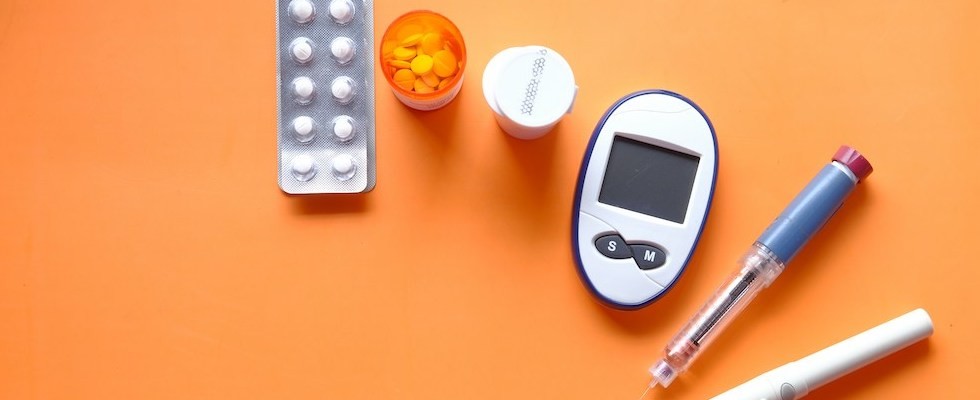
It’s hard to miss the current buzz around glucagon-like peptide 1 (GLP-1) agonists or semaglutides these days, thanks to catchy commercials, social media and a seemingly constant stream of news stories spotlighting the drug’s use for weight loss. However, GLP-1s were originally manufactured and prescribed as a therapy to help people with Type 2 diabetes keep blood sugar under control.
With several years of data now available, GLP-1 is proving to be an effective therapy in the diabetes management toolbox, but it’s important to note that it’s not a complete solution.
That’s because effectively managing Type 2 diabetes involves critical behavior and lifestyle changes as well as continual monitoring necessary for long-term metabolic health. GLP-1s can play an important role in that process, but people with Type 2 diabetes see the best results when these medications are just one part of a holistic diabetes management plan.
When GLP-1 is used in tandem with continuous glucose monitoring (CGM) technology, the complementary therapies strengthen diabetes management, empowering people with Type 2 diabetes to live their healthiest lives.
Detailing the Differences
When it comes to managing diabetes, CGM and GLP-1 both have a lot to offer, but it’s important to understand that they don’t do the same thing.
“CGM and GLP-1 shouldn’t be viewed as competing solutions,” said Bill Mixon, CEO at Advanced Diabetes Supply (ADS). “Both are indispensable therapies that have revolutionized diabetes management, but when used together as companion therapies, CGM and GLP-1s are powerful allies that help people with diabetes achieve better overall health outcomes.”
GLP-1 is a naturally occurring hormone that plays a critical role in regulating blood sugar levels. GLP-1 receptor agonists, the class of medications known by brand names such as Ozempic, Trulicity and Rybelsus and clinically referred to as GLP-1s, mimic that action.
CGM technologies, on the other hand, provide around-the-clock blood sugar monitoring, offering people with diabetes invaluable insights into trends and patterns that might otherwise go unnoticed. While intermittent finger sticks provide data about blood sugar levels at a particular moment, CGM constantly monitors blood sugar fluctuations through a small sensor inserted beneath the skin. That means CGM users can track the impact of specific meals, medications, activities and even stress on their blood sugar levels.
When used together, the treatments optimize blood sugar control. GLP-1 therapies help stimulate insulin secretion and reduce glucagon release, working to lower blood sugar levels. When paired with CGM, people with diabetes can make timely adjustments, whether in medication or lifestyle, to maintain optimum blood sugar levels.
“CGM gives the real-time granular insights that people with diabetes need to make informed changes that have lasting results,” Mixon said. “When used in combination, CGM and GLP-1 can help people with diabetes gain a deeper understanding of how their bodies respond to various factors and make informed decisions that lead to better diabetes management.”
A Multi-Faceted Approach
When it comes to managing Type 2 diabetes, there’s no quick-fix intervention that works for every person. Monitoring glucose levels is crucial, but several other factors, such as lifestyle choices, weight and exercise, also play a role in effectively managing the condition.
Behavior and lifestyle changes are necessary to manage diabetes effectively, and research shows that people who use both GLP-1s and CGM have a better chance of realistically making—and sticking to—those changes.
“Using CGM alongside GLP-1 is a way to optimize treatment,” Mixon said. “Combining these two interventions has demonstrably led to clinically significant A1c reductions in individuals with uncontrolled Type 2 diabetes.”
Wayne Woo, M.D., of the Diabetes and Endocrine Institute, continues to recommend patients with Type 2 Diabetes utilize CGMs to track their blood sugar levels, as medication is just part of the equation.
“Continuous glucose monitoring, as well as appropriate diet and exercise, are critical as they support overall health and good habits needed for the long term,” Dr. Woo said.
In addition, research has also shown that people who use GLP-1s in combination with CGM are more likely to maintain their treatment plans and achieve better long-term results than those who solely rely on GLP-1s.
CGM also plays an important role in GLP-1 dose titration, helping to determine the best dosage of the medication for each user, as well as helping to reduce the risk of hyperglycemia.
Looking Ahead
With more than 38.4 million Americans living with diabetes, it has become one of the fastest-growing chronic conditions in the country. As the landscape of diabetes management continues to evolve, new therapies that complement and work alongside CGM technologies will take on an increasingly pivotal role in addressing this concerning trend.
Although barriers still exist—namely the high cost of GLP-1s and limited insurance coverage—the integration of CGM and GLP-1 systems represents a significant step forward in personalized, holistic care for people with Type 2 diabetes. These companion therapies can work together to achieve optimal blood sugar control, improve quality of life and reduce the risk of diabetes-related complications.
But that’s not all. By providing real-time insights and personalized treatment strategies, this powerful duo has the potential to revolutionize the way we treat Type 2 diabetes, leading to improved patient outcomes and better long-term metabolic health—meaning more people can enjoy living their healthiest lives.
